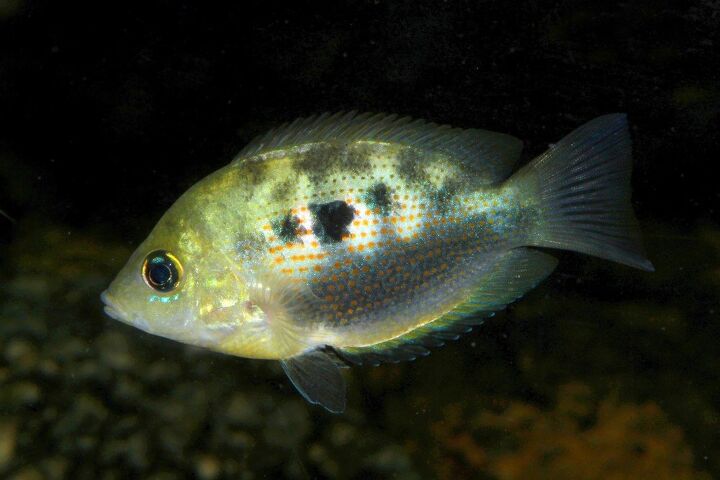
Asian Cichlids General Description
Cichlids are one of the largest families of freshwater fishes with more than 2,000 unique species having already been described. Most cichlids are located in Africa or in the Americas, but there are a few species that are endemic to Asia. Several Asian cichlids remain fairly small, under 5 inches, but there are some like the Mango Tilapia which can grow to lengths exceeding 15 inches and the Nile Tilapia reaching 24 inches in length. Many of the cichlid species found in Asia are raised as food sources, but some species like the Green Chromide can be kept as pets in the home aquarium. Aquarium species can generally be kept with other cichlids of similar size as well as other fish that have similar water condition requirements.
Most cichlids are located in Africa or in the Americas, but there are a few species that are endemic to Asia.
Origins
There are nine species of Asian cichlid which can be found in Lebanon, Israel, Syria, Iran, India, and Sri Lanka. Two species of Tristramella simonsis have been labeled extinct and one species, Tristramella sacra, may be extinct, though it has not been confirmed.
Color
Many of the Asian cichlid species are fairly dull in coloration though the Chromides (genus Etroplus) can exhibit different shades of green and orange. Some Asian cichlids also exhibit gold spots on the body or a gold tint overall with or without dark vertical bars.
Maintenance and Care

The water conditions for Asian cichlids vary slightly by species depending where they are found in the wild. For the most part, however, Asian cichlids prefer warm water in the 68 to 84 temperature range and an alkaline pH between 7.0 and 9.0. These cichlids can tolerate brackish conditions as well as hard water up to 30 dH, though 18 is the ideal water hardness. The ideal tank for Asian cichlids will be decorated with dark substrate or coral sand with plenty of plants, rocks, and driftwood for decoration.
There are nine species of Asian cichlid which can be found in Lebanon, Israel, Syria, Iran, India, and Sri Lanka.
Feeding
Most Asian cichlids are carnivorous by nature so they will eat a variety of fresh and frozen foods as well as commercial pellets and granules formulated for carnivorous species. Be careful about keeping Asian cichlids with smaller fish because they may be viewed as prey.
Also read:Cost-Cutting Tips and Tricks for Aquarium Enthusiasts
Breeding Info
All cichlids are egg layers but most Asian cichlids are mouth brooders in particular. Asian cichlids may be either monogamous or polygamous mouth brooders, gathering the fertilized eggs into their mouth and incubating them until hatching. Asian cichlids exhibit differing levels of parental care with some species caring for their young even after hatching.
Aquarium Varieties
The nine species of cichlid which can be found in Asia include the following:
Photo credit: Michal Sloviak/Shutterstock; Aleron Val/Shutterstock















